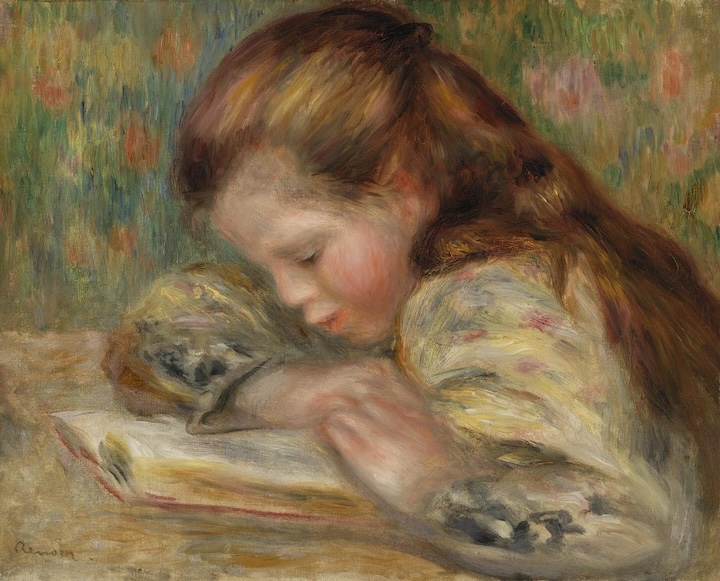Educational optimists predict that artificial intelligence (AI) will soon provide amazing efficiencies and progress in teaching and learning. There is no doubt that AI will benefit educators in their research, development of teaching materials, analysis of data, and administrative duties. And some older students, charged with creating certain artifacts, may find it of use.
But because it also portends dishonesty and disruption to a degree potentially catastrophic to student learning and to the sanctity of the student/teacher bond, AI’s presence in K-12 schools must be carefully restrained. Chesterton’s advice that children ought not be subjected to educational projects and ideas younger than they are is prescient here. For it is quite possible that elements of AI in education will work against natural human development and provide not a shortcut to human formation, but a short circuit.
Youth need to be at home in the real world and with others. The world was made for them by a loving God. Educators must guide them in seeking and ascribing authentic meaning to those flawed but real experiences that make up the real world and real relationships. Students need to be re-integrated with themselves, others, and the natural world, and need to be re-enchanted with the beauty and meaning present in all things and share God’s delight in them.
For students inclined to see schoolwork as burdensome or useless, AI is a tempting shortcut. AI can instantly answer complex “show your work” math and science problems and write unique papers. Even so, some pedagogues celebrate this possible dismantling of conventional homework in the hopes teachers will be forced to focus on developing assignments that are personalized and that promote “critical thinking” and “authentic learning.”
While developing creative and effective assignments should be encouraged, educators cannot short-circuit the learning process by giving up on requiring students to engage at times in rote learning, writing, and calculating, even if it is easier now to cheat. AI speedbumps can be integrated into homework by breaking the writing process into multiple submissions, requiring feedback, more in-class writing, presentations, etc. But traditional homework must still be assigned to protect in-class instructional time.
Students and their parents must also be made keenly aware of how AI-aided deception and sloth short-circuit authentic learning and complex development. They must be convinced that a student’s complete human development will be their competitive advantage against AI job replacement. Those who are grounded in reality and can solve people-based challenges will not want for employment in the future.
Students and parents must also be convinced that undisclosed use of generative AI is plagiarism and lying. Writing assignments, at their best, require multiple levels of critical thinking including synthesis, evaluation, and creativity. Students must be convinced of the need for extensive practice to develop these important human skills and that essays are given not to generate new knowledge for the human species but to develop their own understanding and cognitive power. If they get essays and ideas from generative AI, they will stunt their own capabilities – and the teacher’s ability to evaluate and improve them.

AI can also obstruct the teaching process if educators become bedazzled by AI’s ability to process and use student data. AI assisted by standardized tests can establish a student’s reading or math level and decide what instruction, texts, or problem sets should come next. It can seem like the ultimate personal teacher, who is not distracted by other students and has access to unlimited, perfectly tailored resources. As a perceived bonus, AI-assisted teachers may have more time to be a “guide on the side,” with less time for grading and lesson planning.
This apparent “win-win” is, in reality, a short-circuit.
While intelligent tutoring systems may have a place in homework when a teacher is not present, they can do greater harm than good if used significantly during class time. It may save time and provide individualized data, but this “personalization” can depersonalize instruction. The intoxicating pursuit of reading-level data can stymie real reading, which is much more than getting right responses to the linear text-based questions at the heart of computer-based instruction.
We need to maintain focus on the fact that students are taught to read because they are human beings who love to share stories and insights with each other, not just rack up points on reading levels. Teaching and learning are such fundamental and intimate human-to-human processes that farming out significant elements to computers is quite literally inhuman. Humans are social animals who learn best socially, in person, and in relationships. This was made abundantly and tragically clear during the COVID shutdowns.
The teacher’s modeling of human passion in engaging with truth, beauty, and goodness –wherever it arises – is fundamentally educative and irreplaceable. The teacher is also the source of real encouragement and affirmation for the student who at times struggles and at other times makes spectacular breakthroughs – both of which are access points of human intimacy and therefore demand real human response. AI can neither love the student nor inspire greatness. Despondency and cynicism result when human experiences and learning are isolated, unrecognized by other humans, or simply reduced to data sets.
Because the purpose of AI is to make interfacing with technology seamless, there is little danger that children who do not use AI in their schooling now will somehow not be able to use AI in the future. A much greater danger to children is leaving parts of them underdeveloped and their becoming trapped in addictive, unreal worlds. The proper response to this threat is to counter unreality with reality and the unhuman with the human at every opportunity. Anything that threatens mind/body/spirit unities must be roundly rejected.
Now is the time to re-embrace the humanities as they have been traditionally understood in education. Students need to perfect their humanity as technology de-humanizes it. Unmediated access to the greatest human accomplishments, presented and discussed by other humans who know and love them, even with their blemishes and misshapenness, is what students need and what will help them to love God, learning, and each other.
__________















